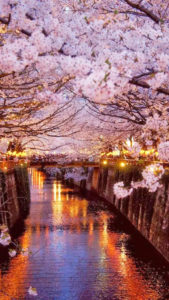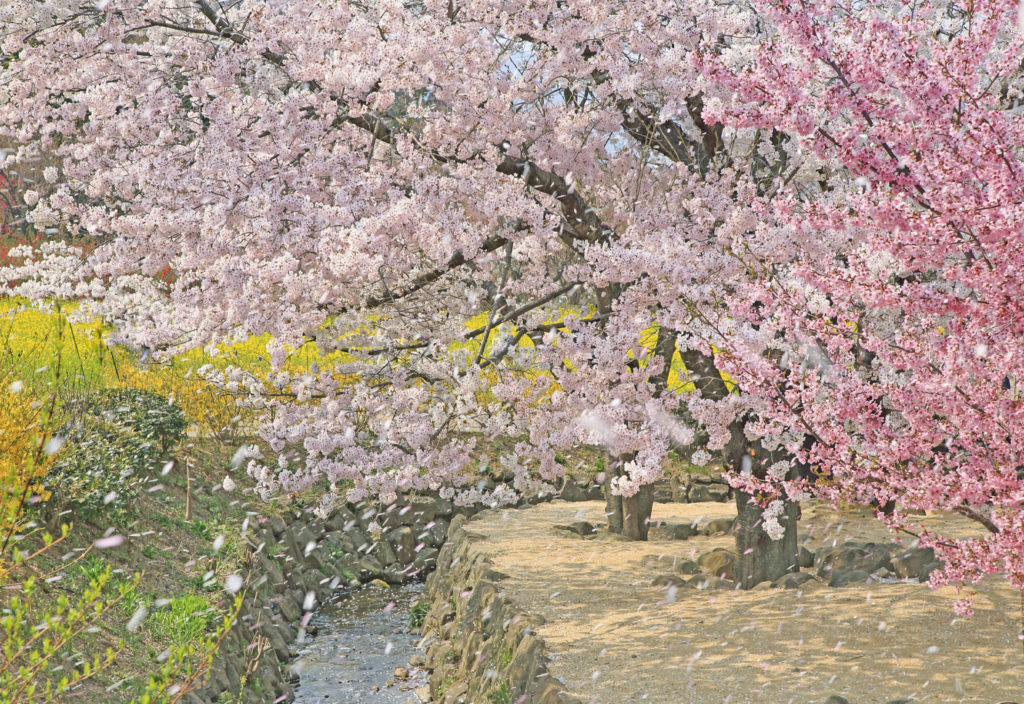 Every year at the end of March or the beginning of April, when most of us are preparing for or already celebrating Easter holidays, the Japanese celebrate a great holiday of cherry blossoms -Hanami.
Every year at the end of March or the beginning of April, when most of us are preparing for or already celebrating Easter holidays, the Japanese celebrate a great holiday of cherry blossoms -Hanami.
What is hanami
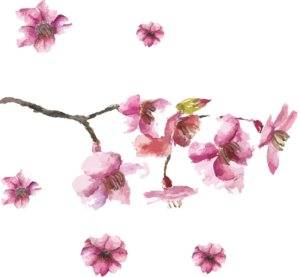 Hanami, roughly translated as flower viewing, is a very old Japanese custom how to celebrate the end of the winter and the beginning of spring and how to enjoy the tranquil beauty of spring tree flowers.
Hanami, roughly translated as flower viewing, is a very old Japanese custom how to celebrate the end of the winter and the beginning of spring and how to enjoy the tranquil beauty of spring tree flowers.
“Hana” means flowers in general, but in this case, it is a spring flood of Japanese cherry sakura blossoms. These are blooming mostly from the end of March throughout whole Japan. Except for the island of Okinawa, where hanami starts already at the beginning of February.
This flower festival is really very popular in Japan. Since the end of February, everyone has been watching the meteorological forecasts so that everyone could plan and enjoy the hanami as well as possible. Usually, the beginning is determined by the first sakura flowers in Tokyo. However, the media regularly report on the shift of blooms by region.
Transience of a delicate beauty
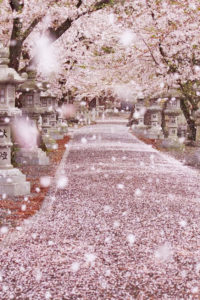 After the first few blossoms, all sakuras are quickly covered in the gentle beauty of mostly pale pink or white dresses of millions of flowers Some species of sakura have flowers in dark pink, yellow and some are almost green. But the flowers will only last on the trees for a week or two until they start falling down. Sakura flowers are considered to be the symbol of the transience of life. So, it can be said, that the hanami is also kind of wabi-sabi holiday – a celebration of the transience of time. Therefore, everyone wants to enjoy the temporary beauty. And so whole families or groups of friends and colleagues venture into the parks. Usually for a picnic or a garden party under the “pink sky”, which can stretch through the night. At that time, parks are really full or rather overcrowded with people not only in large cities.
After the first few blossoms, all sakuras are quickly covered in the gentle beauty of mostly pale pink or white dresses of millions of flowers Some species of sakura have flowers in dark pink, yellow and some are almost green. But the flowers will only last on the trees for a week or two until they start falling down. Sakura flowers are considered to be the symbol of the transience of life. So, it can be said, that the hanami is also kind of wabi-sabi holiday – a celebration of the transience of time. Therefore, everyone wants to enjoy the temporary beauty. And so whole families or groups of friends and colleagues venture into the parks. Usually for a picnic or a garden party under the “pink sky”, which can stretch through the night. At that time, parks are really full or rather overcrowded with people not only in large cities.
How to celebrate hanami
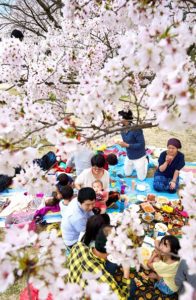
Some celebrate only with food, others add singing with a help of karaoke kits or even small theatre performances. The traditional drink to celebrate the hanami in Japan is saké. But many people prefer to replace it by drinking a tea. Tea utensils decorated with flower ornaments will help to exalt the beauty of the tea ritual. Ideally, green tea or black tea is boiled in a specially decorated kyusu (tea kettle), mixed with fresh organic sakura flowers. So tea gets a pleasant floral flavour of Sakura. Some people are enjoying the organic matcha tea from cups in chawan style, which emphasizes the wabi-sabi character of the hanami festival. Seasonal snacks are served with tea, such as wagashi – classic Japanese sweets often served at the tea ceremony.
History of hanami
Hanami is a very old tradition that has been celebrated since the eighth century. According to some historical chronicles, a certain form of hanami was held in the third century AD. And this is a long time full of historical political and social upheavals and changes. Just as with tea ceremonies, the celebration of hanami was mainly a matter of wealthy elite. It took several centuries for ordinary people to be able to join the celebrations, 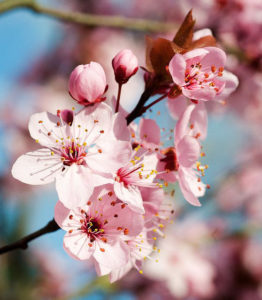 and centuries before the hanami became a massive affair. Naturally, nationwide popularity is also used by companies for commercial purposes.
and centuries before the hanami became a massive affair. Naturally, nationwide popularity is also used by companies for commercial purposes.
Among the elderly people, there is a popular a quieter and older form of hanami – called umemi – which celebrates the flowering of plums – “ume”. Umeme is related more to the original Chinese culture – the Chinese especially loved the smell and beauty of plum blossoms.
Hanami in the world
Hanami as a celebration of cherry blossoms is gradually expanding throughout Europe and the United States of America. But it will probably never and nowhere be as massive as in its country of origin.
Yet, when sakuras or even ordinary cherry trees will get in bloom, find a moment and make your own little hanami with your family or friends under the delicate little flowers.



